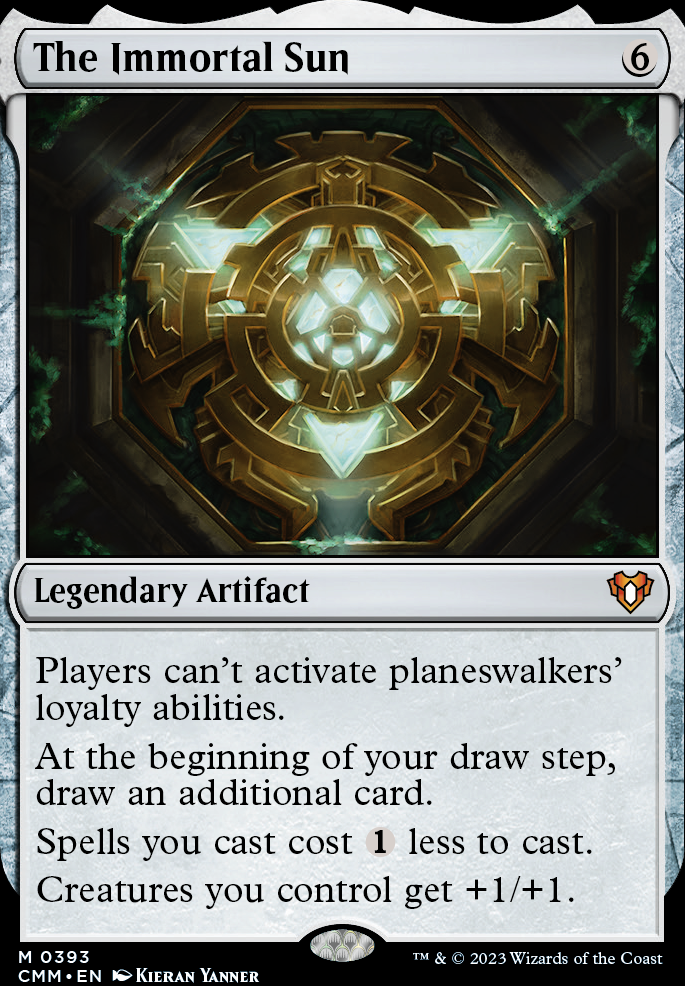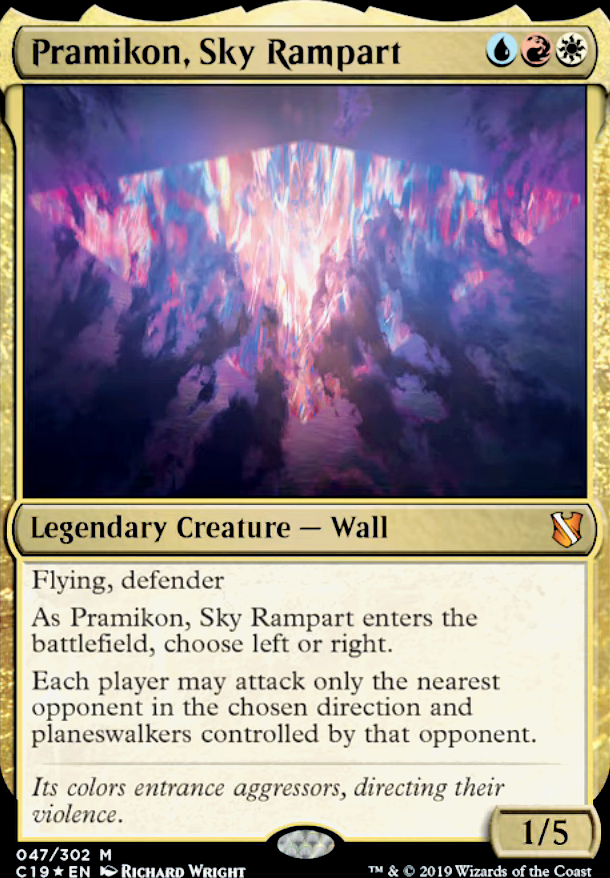
Senior Pram - Pramikon 2.0
Commander / EDH Attrition Counterspell Group Slug RUW (Jeskai, America) Stax Tokens
Lands (36)
- 1x Cascade Bluffs
- 1x Clifftop Retreat
- 1x Command Tower
- 1x Deserted Beach
- 1x Hallowed Fountain
- 1x Hengegate Pathway Flip
- 4x Island
- 4x Mountain
- 1x Mystic Monastery
- 1x Needleverge Pathway Flip
- 4x Plains
- 1x Raugrin Triome
- 1x Riverglide Pathway Flip
- 1x Rugged Prairie
- 1x Sacred Foundry
- 1x Scavenger Grounds
- 1x Sea of Clouds
- 1x Spectator Seating
- 1x Steam Vents
- 1x Stormcarved Coast
- 1x Strip Mine
- 1x Sulfur Falls
- 1x Sundown Pass
- 1x Temple of Enlightenment
- 1x Temple of Epiphany
- 1x Temple of Triumph
- 1x Training Center
Stax (6)
- 1x Archangel of Tithes
- 1x Ghostly Prison
- 1x Jin-Gitaxias, Progress Tyrant
- 1x Propaganda
- 1x Smoke
- 1x War's Toll
Forced Combat (3)
Card Draw & Tutor (12)
- 1x Enlightened Tutor
- 1x Ephara, God of the Polis
- 1x Esper Sentinel
- 1x Idyllic Tutor
- 1x Imperial Recruiter
- 1x Mangara, the Diplomat
- 1x Mystical Tutor
- 1x Recruiter of the Guard
- 1x Rhystic Study
- 1x Wheel of Fortune
- 1x Whirlwind of Thought
Mana Ramp (12)
- 1x Arcane Signet
- 1x Azorius Signet
- 1x Boros Signet
- 1x Chromatic Lantern
- 1x Dockside Extortionist
- 1x Izzet Signet
- 1x Land Tax
- 1x Smothering Tithe
- 1x Sol Ring
- 1x Talisman of Conviction
- 1x Talisman of Creativity
- 1x Talisman of Progress
Token Gen (9)
Commander (1)
Counterplay & Removal (12)
- 1x Chaos Warp
- 1x Counterspell
- 1x Cyclonic Rift
- 1x Deflecting Swat
- 1x Fierce Guardianship
- 1x Flawless Maneuver
- 1x Generous Gift
- 1x Loran of the Third Path
- 1x Mana Drain
- 1x Mystic Confluence
- 1x Swan Song
- 1x Teferi's Protection
Creature Buff (9)
Suggestions
Updates Add
Comments
Attention! Complete Comment Tutorial! This annoying message will go away once you do!
Important! Formatting tips — Comment Tutorial — markdown syntax
Please login to comment
99% Casual
Competitive
| Top Ranked |
|
| Date added | 1 year |
| Last updated | 1 year |
| Legality | This deck is Commander / EDH legal. |
| Rarity (main - side) | 18 - 0 Mythic Rares 53 - 0 Rares 10 - 0 Uncommons 7 - 0 Commons |
| Cards | 100 |
| Avg. CMC | 3.22 |
| Tokens | Angel 4/4 W, Bird 1/1 W, Bird 2/2 U, Copy Clone, Elephant 3/3 G, Goblin 1/1 R, Goblin 1/1 R for Goblin Spymaster, Human Cleric 2/1 RW, Human Rogue 1/2 RW, Human Warrior 3/1 RW, Lightning Rager, Monk 1/1 W, Soldier 1/1 RW, Spirit 1/1 W, Thopter 1/1 C, Treasure, Ultramarines Honour Guard 2/2 W |
| Folders | Pramikon |
| Votes | |
| Ignored suggestions | |
| Shared with | |
| Views |

